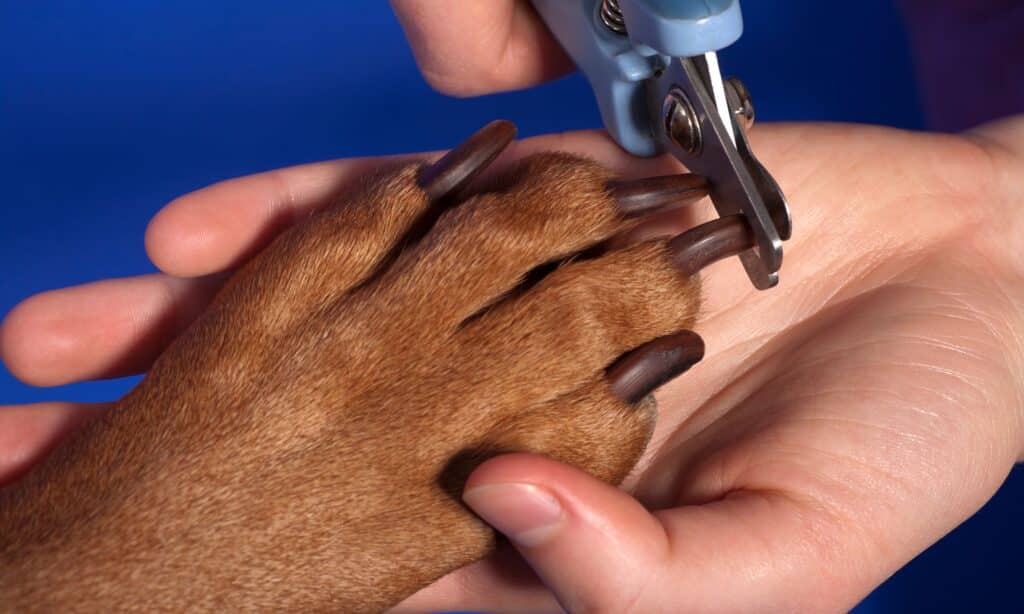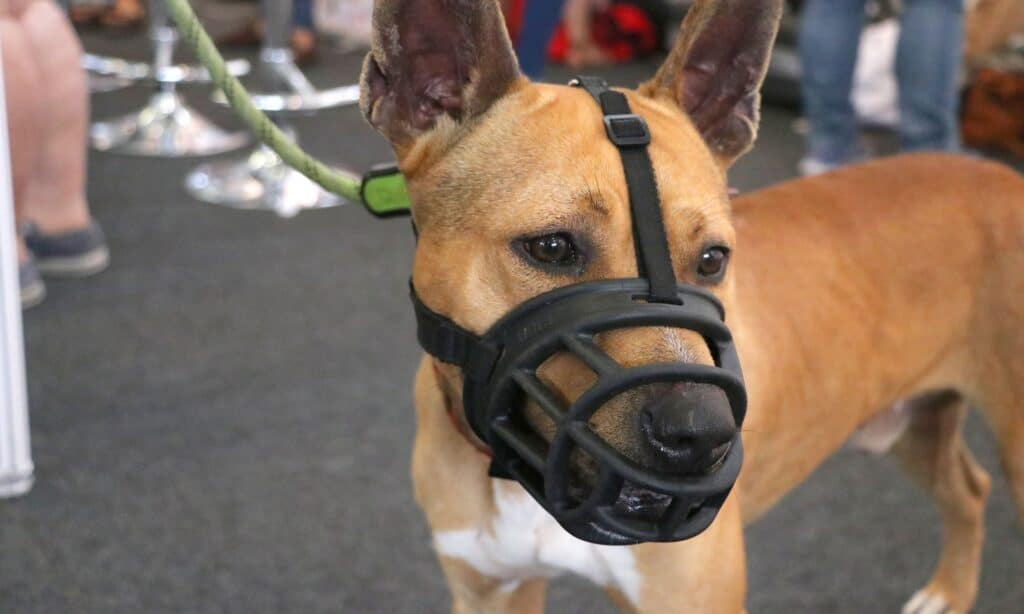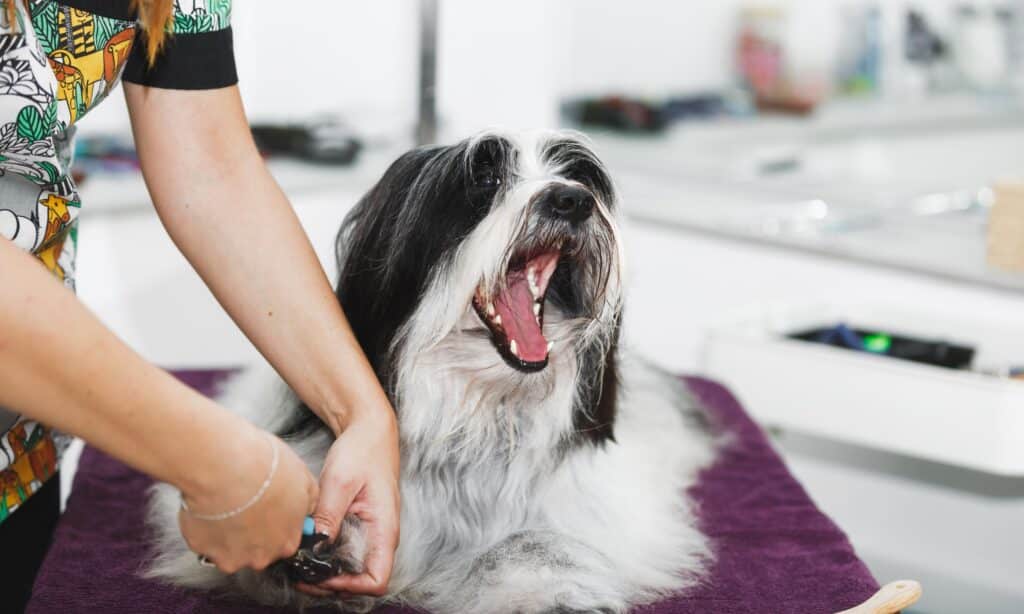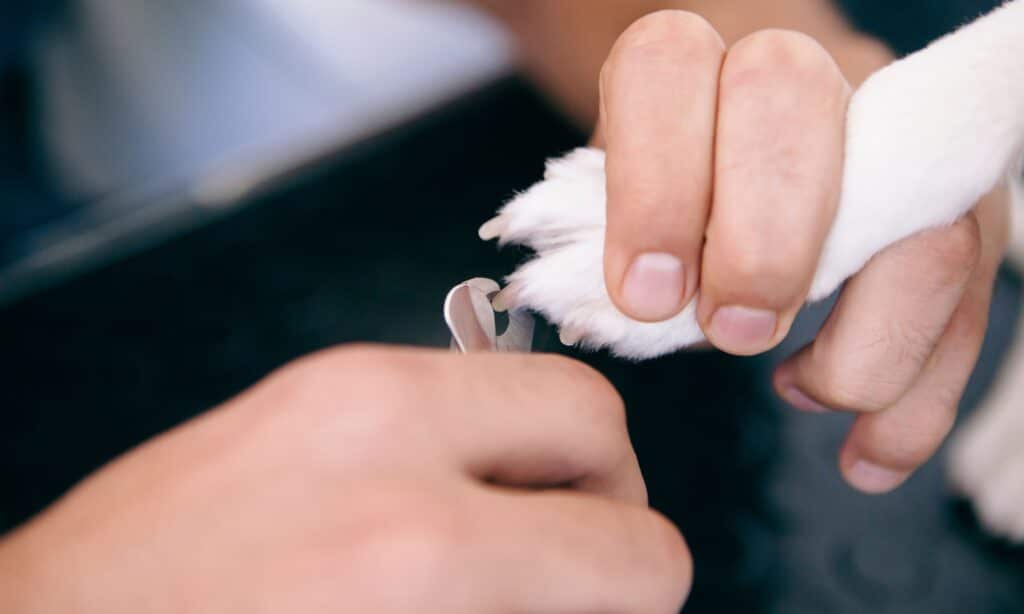Broken Nails In Dogs: Here’s What You Should Know

Like us, tearing or breaking a nail can be quite painful for dogs too. When dogs break their nails, it may be because the nail gets caught on something, like furniture or woody areas, or it may happen when the dog is running around all over the place.
Keratin makes up the outer layer of a dog’s nail. Since this portion of the nail is dead and hard, dogs don’t feel any pain when it is cut. A fragile cuticle called the “quick” protects the blood vessels and nerves that go through your dog’s nails. This vascular structure, which is primarily found above the nail curve, nourishes your dog’s nails, enabling them to grow and feel different sensations. The “quick,” a source of blood and nerves, is located inside the nail. If your dog’s nail is damaged deep enough to reach the quick, then it will bleed a lot and be painful for them.
When you encounter a broken nail, if the bleeding does not stop or if the injury appears serious, take your dog to the veterinarian. However, if the damage is minor, you might be able to treat it at home.
Here are some tips for treating your dog’s broken nail.



1. Restrain Your Dog
While you attend to the nail, ask someone to hold your pet. Keep in mind that even the most loving animal may bite when it is hurt. The use of a muzzle may prevent harm. Bring your dog’s body close to yours while holding their head away from you to control them. If your dog is a wriggler, ask a friend to hold them while you examine the nail.



2. Control The Bleeding
Do not panic if your dog’s broken nail bleeds heavily, applying pressure to the area should control the bleeding. Apply a styptic pencil, silver nitrate stick, or cauterizing powder to the nail if the bleeding does not stop in 5–10 minutes. Both the pet store and the first-aid section of your local drugstore have these supplies.



3. Remove The Damaged Part
To prevent additional infection, the broken portion of your dog’s nail must be removed if part of the nail is still connected after being torn. Carefully removing the broken or damaged portion of the nail is necessary. Despite the fact that this treatment is frequently unpleasant, it may be completed quickly, and it typically doesn’t require anesthesia; nevertheless, depending on the severity of the pain and the location of the break, sedation is necessary. However, your veterinarian is usually best suited to handle this task. As you make your way to your veterinarian hospital, keep the foot covered in a towel.
Keep your dog’s nails trimmed to prevent the inconvenience of a broken nail. Longer nails are more likely to snap than shorter ones. Ask your veterinarian or a veterinary technician to demonstrate the correct nail trimming, so that you can cut your dog’s nails at home. And if you feel uncomfortable doing it yourself, simply arrange routine appointments at the veterinarian clinic to get your dog’s nails clipped.




